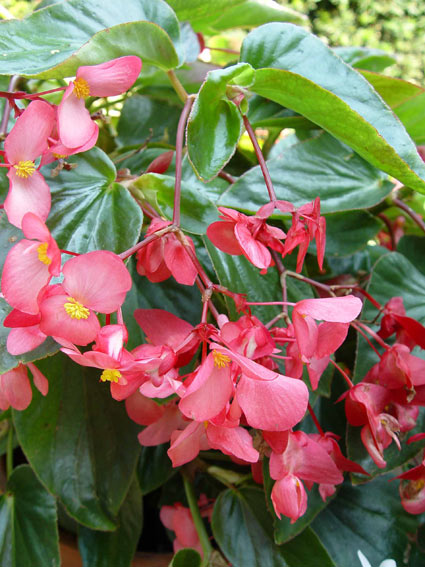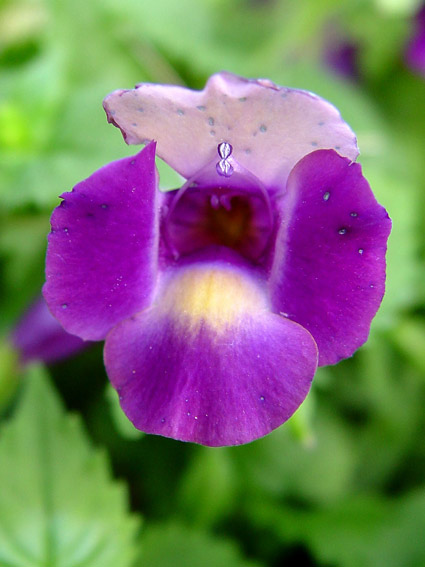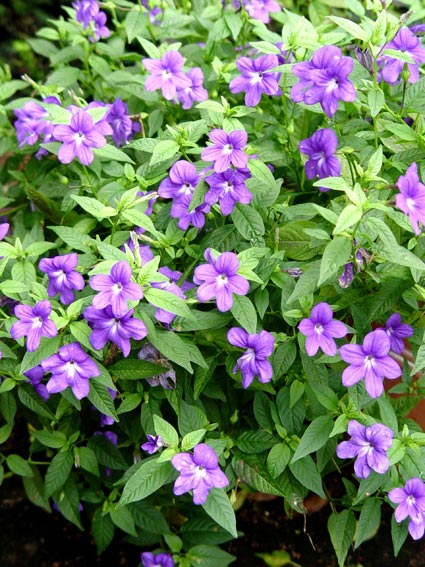Top 10 Early Bloomers
These 10 bulbs, perennials, or shrubs are hot out of the gate after a long and cold winter which makes them great candidates for your garden.
This year, impatiens will be scarce or non-existent in garden centers due to a serious fungal disease: downy mildew. This deadly new disease flared last year and largely wiped out America’s go-to annual flower for shade. Downy mildew infected impatiens in at least 35 states in late summer 2012 and since the disease is highly contagious and apparently able to overwinter in soil for years, the prospects aren’t good this year. Not to worry though, there are several other reliable annuals that do well in similar garden spots.
Plant pathologists and growers are generally advising gardeners to steer clear of impatiens because the infection risk is high – especially if the disease was in your yard or a neighbors' yard last year. Some are even predicting that impatiens could end up going from king of the annuals to a marginal player almost overnight, as happened in Europe, where downy mildew hit years earlier. This leaves gardeners with the question of what alternatives will work as impatiens substitutes for shade. Here are eight, some of which are widely grown by the Brits, worth considering:
This is the closest cousin that’s resistant to downy mildew. These are bigger, more upright and markedly more expensive than bedding impatiens in 6-packs, but you may not need as many plants. They come in a flamboyant variety of colors and leaf shades, and do especially well in shady or part-shade containers.

© George Weigel
This new branded line is a hybrid with New Guinea impatiens genes, which makes them resistant to downy mildew. SunPatiens are larger than common bedding impatiens (you'll need fewer plants), too, but they’re versatile enough to do well in both sun and shade. SunPatiens come in three different series, with slightly different growth habits, for a total of 18 different color variations, primarily pastels and shades of red (pink, rose, magenta, white, coral, salmon, orange and red). The trailing series of SunPatiens is the closest substitute to common impatiens.
Price-wise, here’s the best alternative. You'll find these compact, shade-tolerant, waxy-leafed durable flowers in 4- and 6-packs and in multiple colors of reds, pink, white. You'll need the same number of plants as impatiens. These are somewhat less showy than impatiens.
Look for larger, trailing begonias with such names as ‘Dragon Wing,’ ‘Big’ and ‘Whopper.’ They generally sell in 4-inch and larger pots. These are much bigger than wax begonias (2 to 3 feet tall and wide) and have colorful glossy foliage and plenty of season-long flowers. Dragon Wing and similar begonias come in red, pinks, and several blends of red/orange. They're also pricier—running comparable to New Guinea impatiens, but you'll need fewer plants.

© George Weigel
Another affordable choice is this familiar annual, grown mostly for its showy foliage as opposed to flowers. Lots of new varieties abound in a wide range of leaf colors from lime to gold to burgundy to assorted variegations. You'll also find assorted sizes, from dwarf versions that stay under 1 foot to large, bushy types that top 2 feet. Some have intricately-cut leaf margins.
This is a good year to try this little-known and under-used shade annual. The flowers are tubular and lipped, and usually come in violet, lavender, bluish-purple and gold; some are bi-colored. They’re not as "in your face" as impatiens but actually prefer at least afternoon shade over hot, direct sun. ‘Summer Wave’ is a good shorter series, and ‘Summer Wave Bouquet’ is worth a look if you prefer something more upright.

© George Weigel
Sometimes called “bush violet,” browallia is another long-overlooked, foot-tall, upright shade annual that blooms blue, white, or blue-violet. The flowers are 5-petaled and star-shaped. They may not give you as much bang for your buck as impatiens, but they’re typically available in affordable 4- and 6-packs. Some are slightly trailing.

© George Weigel
This shade-tolerant type of annual geranium has a trailing habit that makes them best for use in hanging baskets, window boxes, and containers, although they’ll also grow in the ground. Flower colors include white, pink, rose, red, and pink-lavender. Foliage is sometimes decorated as well.